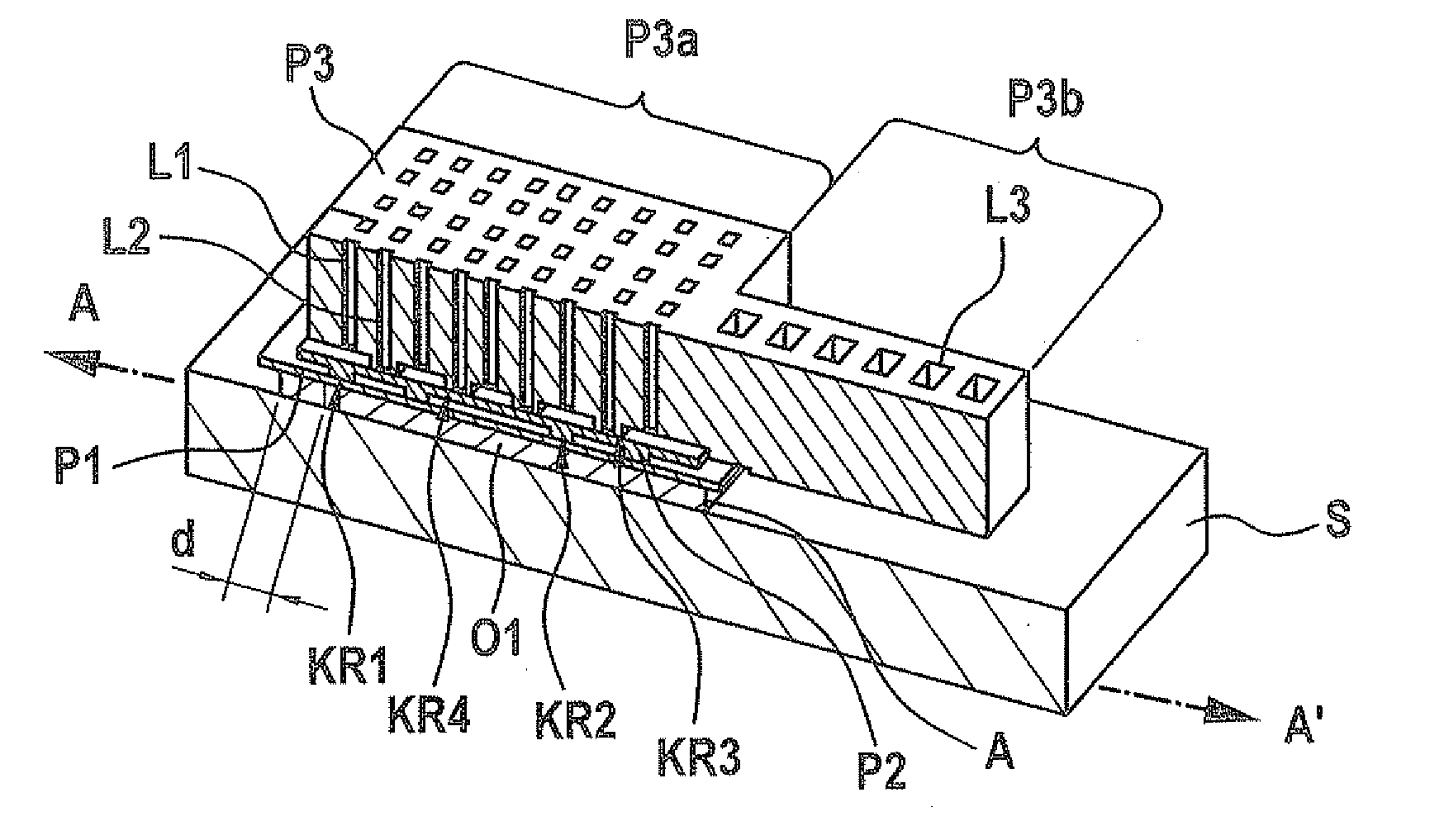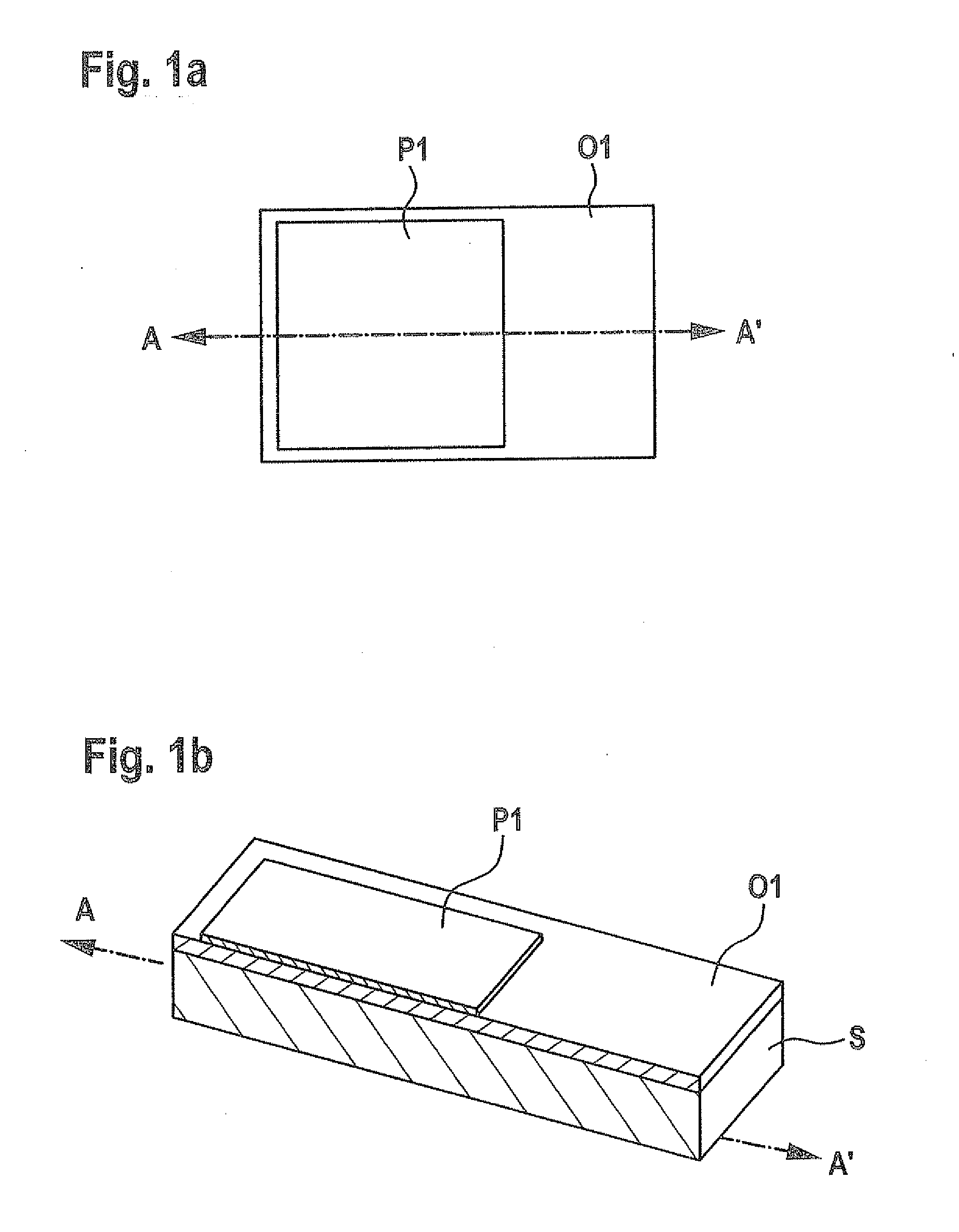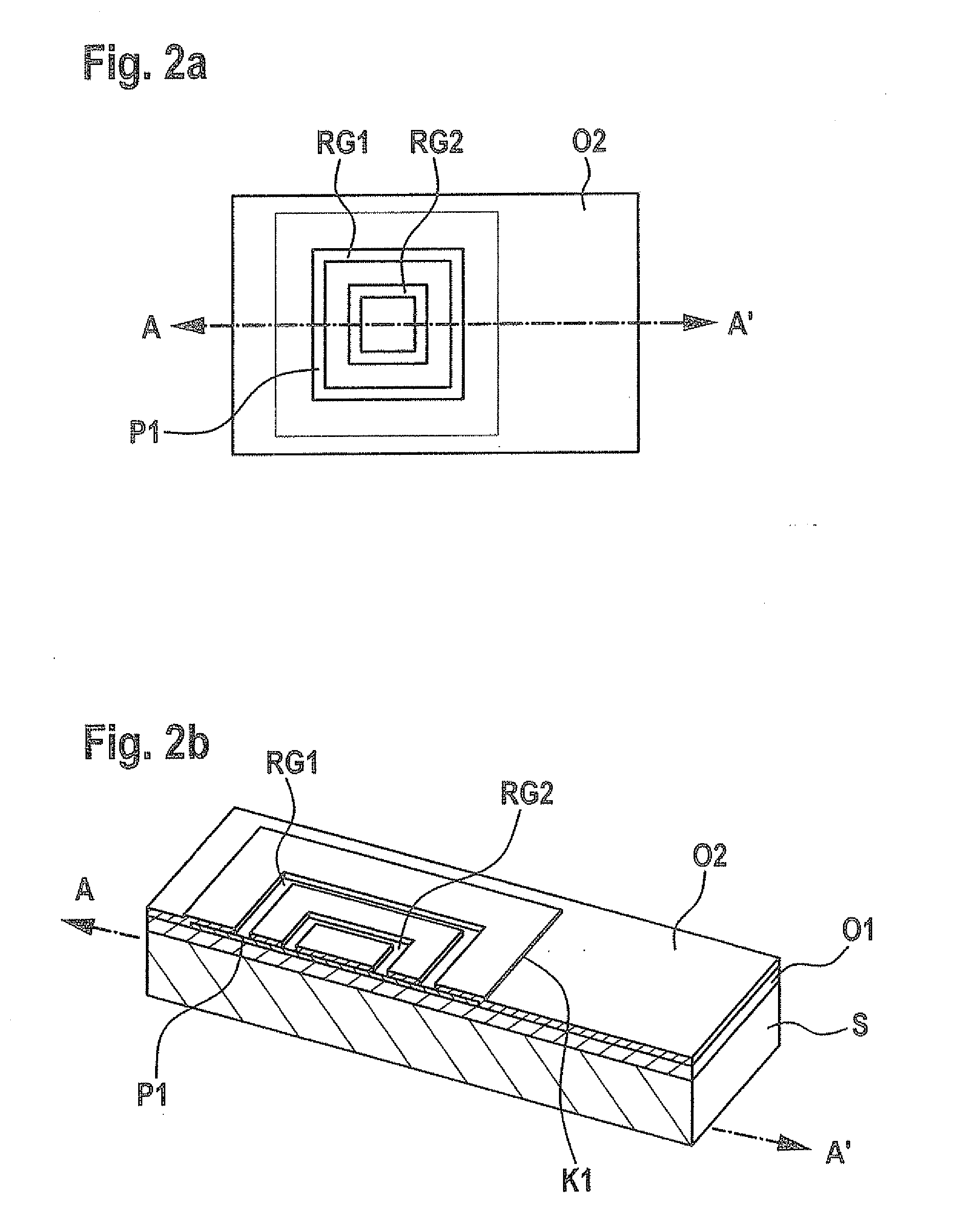Micromechanical system and corresponding manufacturing method
a micromechanical system and manufacturing method technology, applied in the direction of microstructural devices, instruments, transportation and packaging, etc., can solve the problems of mechanical stability of connection, mechanical tension, and difficulty in manufacturing structures at high resolution, and achieve stable mechanical connection, low topography, and reliable removal of the sacrificial layer
- Summary
- Abstract
- Description
- Claims
- Application Information
AI Technical Summary
Benefits of technology
Problems solved by technology
Method used
Image
Examples
Embodiment Construction
[0017]FIGS. 1a, b through FIGS. 6a, b show successive processing stages of a first specific embodiment of a method for manufacturing a micromechanical system according to the present invention, a) each in a top view and b) each in section along line AA′ in a).
[0018]In FIG. 1, reference sign S identifies a silicon substrate, for example, a wafer substrate. A first sacrificial layer O1 made of oxide is provided by deposition, for example, on silicon substrate S. P1 identifies a first micromechanical functional area made of polysilicon, which has been structured on first sacrificial layer O1.
[0019]Furthermore, with reference to FIG. 2, a second sacrificial layer O2 made of oxide is deposited over first micromechanical functional area P1 and surrounding first sacrificial layer O1, which forms a step K1 on first micromechanical functional area P1.
[0020]Subsequently, a first weblike trench structure RG1, RG2 is formed in second sacrificial layer O2 over first micromechanical functional ar...
PUM
| Property | Measurement | Unit |
|---|---|---|
| micromechanical functional area | aaaaa | aaaaa |
| micromechanical functional areas | aaaaa | aaaaa |
| thick | aaaaa | aaaaa |
Abstract
Description
Claims
Application Information
 Login to View More
Login to View More - R&D
- Intellectual Property
- Life Sciences
- Materials
- Tech Scout
- Unparalleled Data Quality
- Higher Quality Content
- 60% Fewer Hallucinations
Browse by: Latest US Patents, China's latest patents, Technical Efficacy Thesaurus, Application Domain, Technology Topic, Popular Technical Reports.
© 2025 PatSnap. All rights reserved.Legal|Privacy policy|Modern Slavery Act Transparency Statement|Sitemap|About US| Contact US: help@patsnap.com



